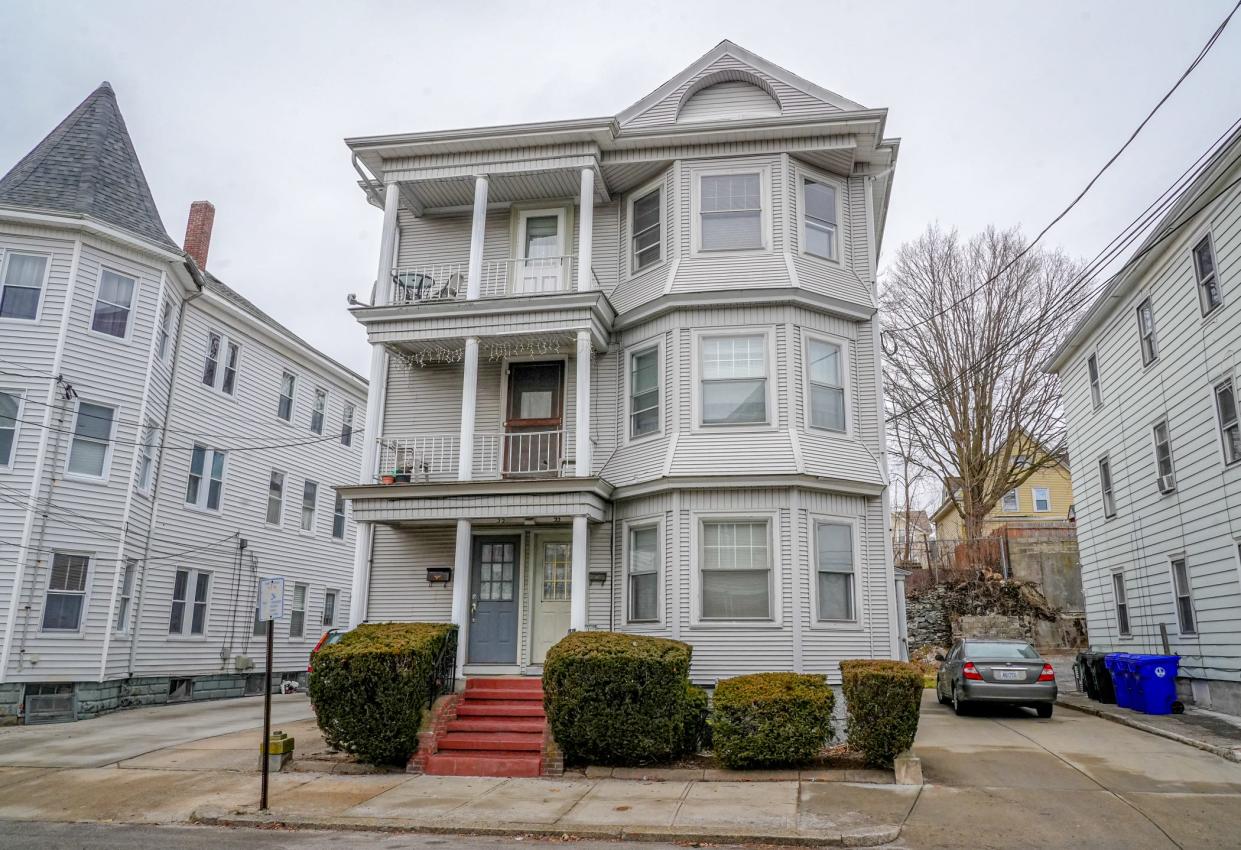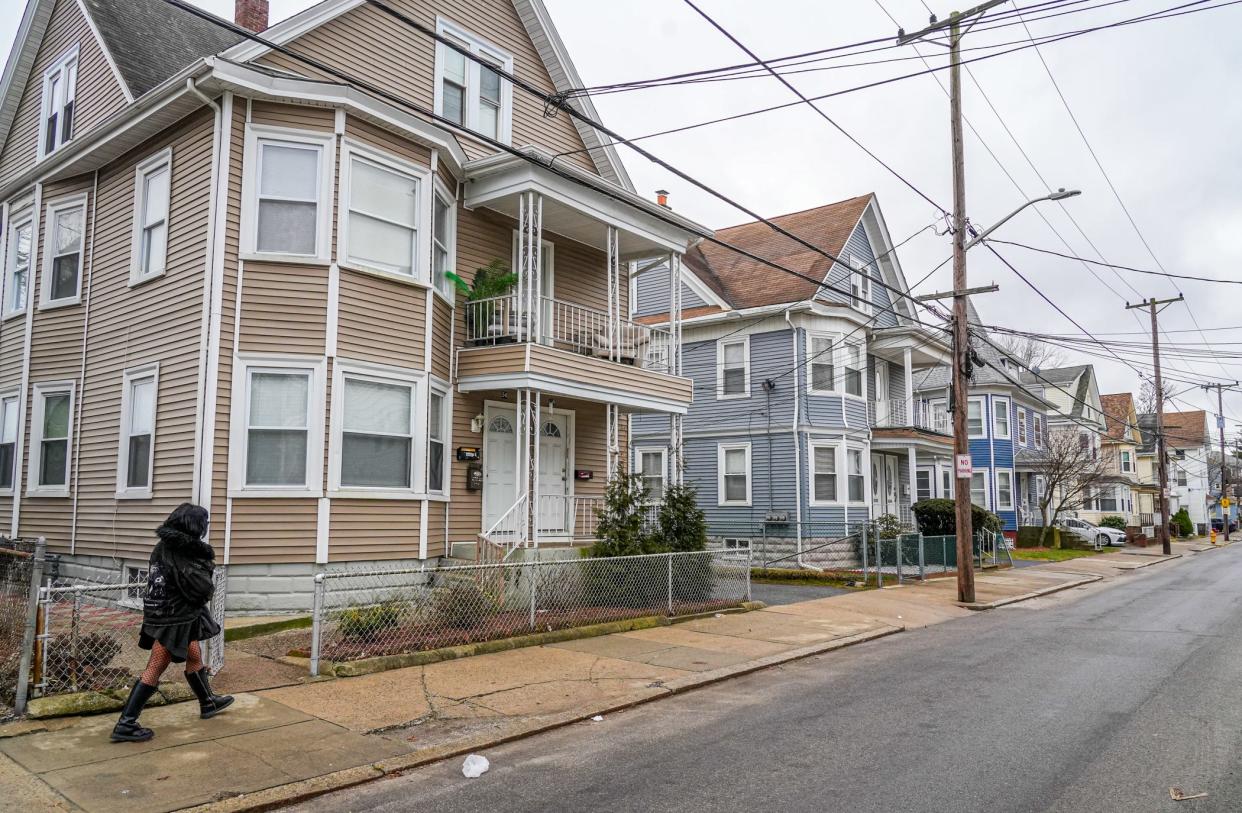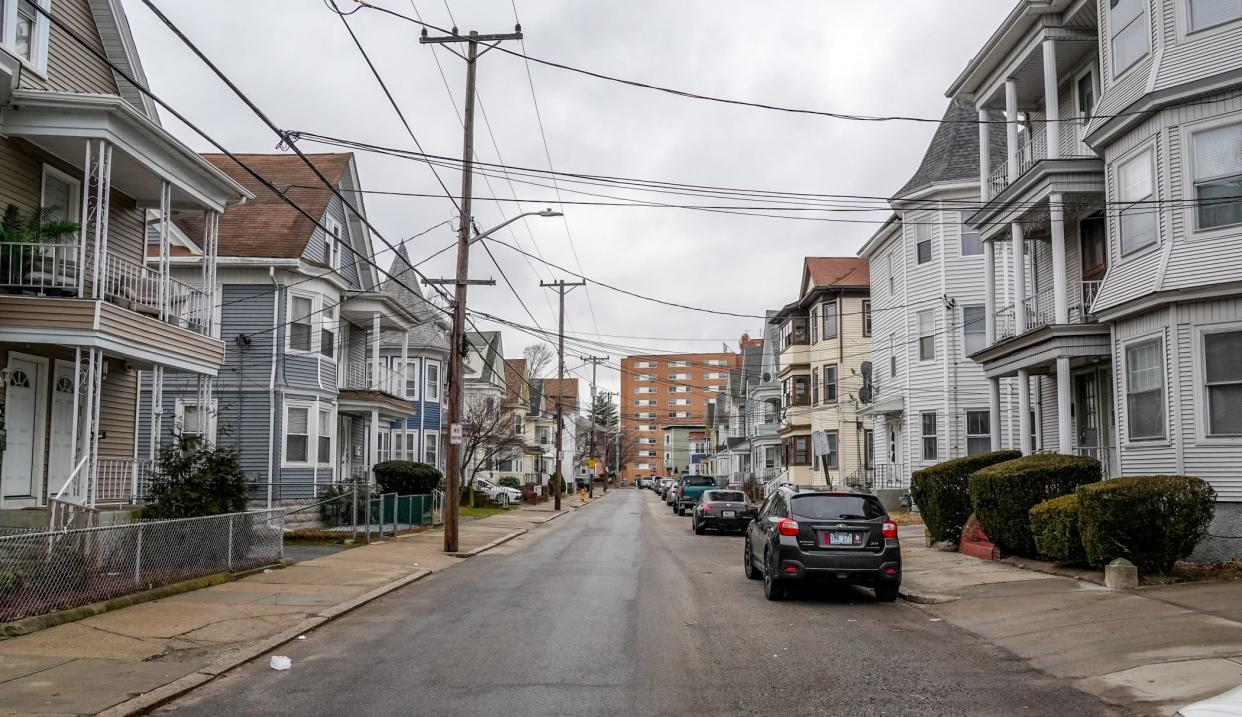RI's triple-deckers were efficient housing for generations. Why did we stop building them?
Handwritten letters, postmarked from Rhode Island, arrived in villages and cities across Europe and Quebec by the untold thousands between the 1880s and the end of World War I in 1918.
Written in Italian and French, Yiddish, English and Portuguese, the letters home from relatives who had already emigrated carried the same message: Come. There are jobs here.
Like the Massachusetts mill cities of Lawrence, Worcester and Fall River, factories in Central Falls, Woonsocket, Pawtucket and Providence whirred with opportunity.
But where would all these new people live?
Up rose the triple-deckers, those utilitarian, three-story apartment houses, each squeezed beside the next like wooden vertebrae forming backbones of support for a new working class.
Then came a backlash against them – and the immigrants they housed.
The story of the triple-decker is “intimately interwoven with the story of immigration,” says C. Morgan Grefe, executive director of the Rhode Island Historical Society.
It is also the story of the rise of zoning regulations and building codes that curtailed their construction and today make the idea of building new ones obsolete.
Triple-deckers, which helped lift generations of aspiring immigrants into property owners and the middle class, enjoy a nostalgia today; even a documentary is in the works, "Triple Decker: A New England Love Story," by a Wakefield filmmaker.
Neighborhoods of triple-deckers in Worcester, Fall River and Providence's Oakland Avenue, to name just a few, have been recognized on the National Register of Historic Places.
But a building once praised for its functionality in housing a burgeoning urban population is unlikely to rise again to help meet the current housing crisis, builders and regulators say.
More: Rhode Island's housing crisis is at a breaking point. How did we get here?
The reason? A new triple-decker today would be considered commercial property requiring expensive sprinkler and fire-alarm systems.
For a builder trying to determine his cost and profit margin per square foot, “it doesn’t pencil out on your return on investment,” says James Moore, Providence’s director of inspections and standards. “That’s the biggest hurdle.”
Says Eric Army, a Providence architect: "You don't build new three-families anymore.”
Three-deckers sprouted across New England's industrial landscape
By 1910, seven out of every 10 Providence residents were foreign-born, says the February 1990 publication "Rhode Island History," a periodical of the Rhode Island Historical Society.
Housing construction boomed as waves of immigration reached the Ocean State. Most structures going up weren’t single-family homes; that would come decades later with the popularity of automobiles and the exodus from crowded cities to suburbia.

At the turn of the 20th century, independent builders erected apartment houses, usually duplexes and triple-deckers, within walking distance of factories.
Between 1865 and 1920, the number of dwellings in Providence increased more than fivefold, from 6,773 to 35,634, the historical society report says. The federal Census lists Providence’s population in 1920 at 237,595 – almost 50,000 more than today.
From Lewiston, Maine, to Bridgeport, Connecticut, New England's industrial cities were seeing the same construction boom.
In Boston, about 16,000 triple-deckers housing some 192,000 people sprang up between 1880 and 1930, says the New England Historical Society.
In Worcester, triple-deckers made up half of all construction between 1890 and 1900. Of the 6,000 built, 4,000 remained as of 2017.
Triple-deckers were the oasis for newcomers dropped into a new world. They could live temporarily with relatives already settled in one and maintain their cultural identities in growing ethnic neighborhoods: the Italians on Federal Hill, the Jews in the North End, the Irish in Smith Hill, Olneyville and South Providence.
The arrangement made economic sense as well, allowing the original occupant to split expenses, collect rent and eventually accumulate enough money to buy the house.
“Maybe the owner lived on the first floor, an aunt and uncle on another floor,” says Grefe, “and maybe there is an extra bedroom on the third floor they can rent to a friend from the home country who came over to get a job.”
Many neighborhoods of triple-deckers were built by the same contractor who showed off their trade skills with ornamental molding and Victorian scrollwork, or bay windows in front that brought in more sunlight and offered wider street views.
A typical triple-decker stacked up three 1,000 to 1,200 square-foot apartments with identical floor plans: two-bedrooms, a kitchen and a bathroom, a dining area and a parlor. A porch on each floor often hung virtually over the sidewalk below, so close to the street were the buildings.
How multifamily housing became stigmatized
Not everyone appreciated the triple-deckers.
At the start of the 1910s, “reformers” and organizations like the Immigration Restriction League, which advanced the ethnic-bias doctrine of eugenics, were raising concerns about the “triple-decker menace.”
The reformers grounded their objections in social concerns: sanitation, the potential spread of disease in such tight confines and the fracturing of moral character.
“Midde-class reformers are saying, ‘No, no, no’ to triple-deckers,” says Grefe. “’You have strangers living in the house? With children? With women?’ So, there is this stated concern for propriety, safety, cleanliness.”
Housing crisis: Rhode Island used to have rent control. What would it take to bring it back?
But, says Grefe, “the conflation of concern over those houses with the danger of immigrant communities is undeniable.”
“The house form becomes in many ways the stand-in for what many people are actually afraid of, which is difference. And they take that out on the houses.”
In 1912 Massachusetts passed a law that effectively banned triple-deckers: it prohibited cooking above the second floor in any wooden tenement and restricted occupancy to two families.
Five years later, in 1917, a writer for the Providence Chamber of Commerce made a blunt pitch for a similar ban in Rhode Island, declaring that “so far, the native Americans [meaning white Anglo-Saxons] have watched these foreign invasions as if they were helpless.”

Writing in Providence Magazine, the unnamed author said some "natives" were giving up their homes on Broadway and “other pleasant streets, not from choice, but for the reason that undesirable buildings have changed the character of the neighborhood.”
“Only with the Jews and the Italians does the three-decker seem to have been a real success, although of late the Italians are going in for double three-deckers for six families. Other people are beginning to shun the three-deckers. They realize that it lowers one’s social standing to be rated as a three-decker dweller.”
Those unfortunates who live in one must tolerate the “aroma of cooking and household laundry from the lower floor ... the discomfitures of back-stairway tramping and general clutter on the landings, the children squabbling for various and vexatious reasons.”
“Worcester once prided itself as the veritable home of the three-decker. It now asks to be excused from mentioning the subject. What has been inflicted upon them and us will remain as disfiguring marks upon the landscape and be exhibited to our great-great-grandchildren as terrible things in which many of us once lived.”
In 1923 Providence banned further construction of triple-deckers, citing the health concerns of living in tight confines.

But the need for housing was still there, and some builders would get around the prohibition by building two-story apartment houses with livable third-floor space disguised under the roof line.
The building ban was dropped in Providence within a few decades, but by the 1960s urban renewal projects demolished many triple-deckers anyway. Others fell into disrepair in the hands of absentee landlords, who often replaced ornate exteriors with aluminum and vinyl siding.
The 1980s and '90s saw a revival of triple-deckers as the popularity of condominium housing freed up bank loans for renovations to these century-old structures, which were well built and remain important housing stock for city renters, including college students.
You could build a three-decker in Providence now. Why that's not likely.
“From a zoning and land-use perspective, there is nothing preventing people from building three-family houses,” says Robert Azar, deputy director of Providence’s Planning and Development office. “In fact, much of the city, perhaps most of the city, is zoned in such a way we would allow three-family houses.”
It is the economics of building one – and, to a lesser degree, the changing lifestyle of renters – that has rendered them obsolete.
Triple-deckers would fall under the stricter commercial safety code requiring fire-alarm and sprinkler systems. That cost “is often prohibitively expensive to the point where developers would rather just build a two family without a sprinkler system,” says Azar.
Even if a builder can absorb the cost of installing sprinklers, Army, the Providence architect and builder, says the shrinking size of American households has reduced demand for bedrooms, "compressing" the premium a landlord can charge for the extra rooms in each apartment that were a prime feature of traditional triple-deckers.
If a nice one-bedroom apartment now rents for $2,000 per month, a two-bedroom for $2,200 and a three-bedroom for $2,400, a developer gets better value by squeezing the floor space of those extra bedrooms into as many additional one-bedrooms or studios as possible.
"Back when three-families were built, it was typically for at least nine and maybe 12 occupants," Army says. "Now it might be six occupants [or] two couples, unless it is serving very poor families."
Army sees an opportunity to break large triple-deckers in half to create six-unit buildings without changing the appearance and footprint or triggering commercial building code requirements that would require a commensurate rent increase.
On Vinton Street in Providence’s Federal Hill, Army rehabbed a deteriorating triple-decker to have three units in the front and three in back, all accessing the same central staircase.
Azar says there is indeed a demand for smaller, less expensive apartments in many Providence neighborhoods.
“We see a lot of development of apartment buildings with studios and one-bedroom apartments. Rather than living with multiple roommates in a triple-decker kind of setting, which is what I did through my post-college years, we see individuals living alone. Or maybe a couple living together in very small apartments that have their own kitchens and living arrangements.”
Says Azar: “The way we live has changed.”
With staff reports by Patrick Anderson.
This article originally appeared on The Providence Journal: RI triple-deckers solved past housing crisis. Why not now?
